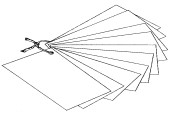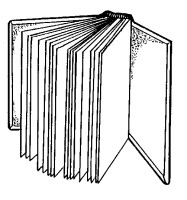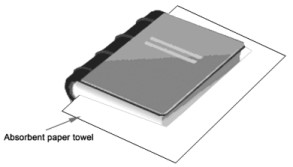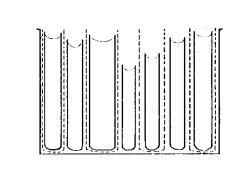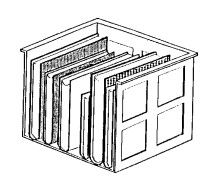If you have a large quantity of damp/wet records, and aren't able to clean and dry them within 48 hours, freezing is a good option. It will give you time to:
Do not freeze glass plate negatives, magnetic tapes (e.g. audio, video, computer), floppy discs, electronic media (e.g. CDs, DVDs), microfilm and microfiche, or photograph albums.
- use waterproof or freezer pens to ensure that each crate is numbered and a list of its contents is attached
- pack like with like–don't mix wet/sodden and just damp records together (damp records will absorb the excess water).
Drying frozen records
If you are drying frozen records in house:
- only remove small quantities from freezing at a time
- allow records to thaw in a cool, dry area
- wash or remove any mud or soil while the records are defrosting, but still damp.
Note: If you are engaging a commercial provider to salvage your records, you might need to clarify whether they have specific requirements you'll need to meet when freezing records.
Heavily soiled and water-damaged records
If you have items that are heavily soiled (e.g. after a flood), you need to determine what the records are soiled with (sewerage, mud, other contaminants).
If the records are contaminated with sewerage, you must leave them in-situ and contact your Workplace Health and Safety Coordinator. Recovery of this material will require the services of a professional.
If the records are still intact and legible, you should attempt to wash the mud from them (as above) and either:
- air dry in-house
- freeze the records
or
- seek specialist assistance.
If the records are too damaged, or if washing and salvage is not possible, you'll need to photograph them and seek advice on the disposal of damaged records.
What to do once records have dried
You'll need to monitor recently dried records in their temporary storage area for signs of continuing damp or mould.
Only reinstate the dried records when you are sure that both they and the permanent storage area have been completely cleaned and dried, and are mould-free.
Soiled and dry records
As with soiled and wet records:
- confirm what the contaminant is to determine health and safety risks and the most appropriate cleaning method
- limit handling to the minimum–seek assistance from either a specialist commercial salvage company or QSA Preservation Services.
If the record is robust enough for handling and the contaminant is not a health and safety risk you may be able to clean off loose general surface dirt it by brushing, wiping with an electrostatic cloth, or using a gentle vacuum (fitted with a HEPA filter).
Professional cleaning will be required if:
- the contaminant is biological in nature
- the record has smoke damage
- the particulate is sooty, greasy, deeply ingrained or causing significant staining.
Do not attempt to use chemicals, solvents, detergent or water to clean soiled records. Do not attempt to clean photographic, magnetic or film-based records–refer to a specialist.
Torn or fragmented records
To salvage torn or fragmented records (e.g. from age or mishandling):
- collect and contain the fragments with the original record using polypropylene sleeves, re-sealable bags, envelopes, folders or boxes
- label the containers so that they can be identified in the future
- refer to a trained professional.
Note: It may be possible to piece fragments together before scanning or digitising if you have the right equipment, however this can be painstaking work.
Heat affected or charred records
Heat affected or slightly charred records will be particularly fragile and need to be handled carefully.
If the records are just damaged around the edges, it may be possible to trim the damaged edges and to replace bindings and covers. You will need to make sure that you aren't losing any information when doing this.
If records are heavily distorted or have other materials melted or fused to them, they will require a professional to salvage them. Contact QSA Preservation Services for more information.
Review and report
Your agency should review and report on the incident to help understand the impacts and inform changes to procedures, processes and response plans.
Specific recordkeeping issues include:
- a summary of actions taken to respond to and recover from the incident, including salvage of records
- details of the effects on records or recordkeeping systems
- damage to information infrastructure or interruption to services
- any loss of records, their replacement or restoration
- authorisation for or documentation of the disposal of lost and damaged records.



